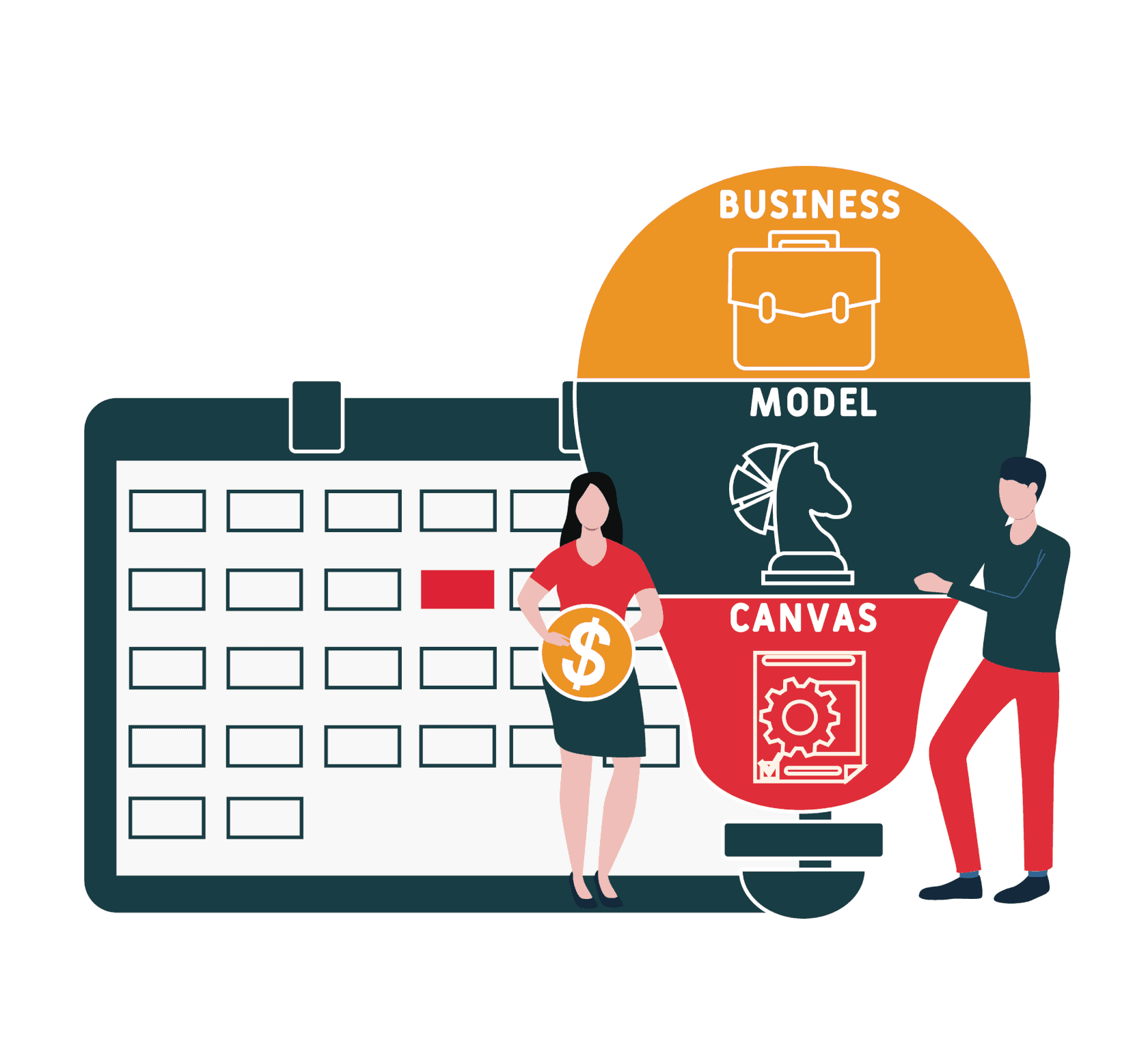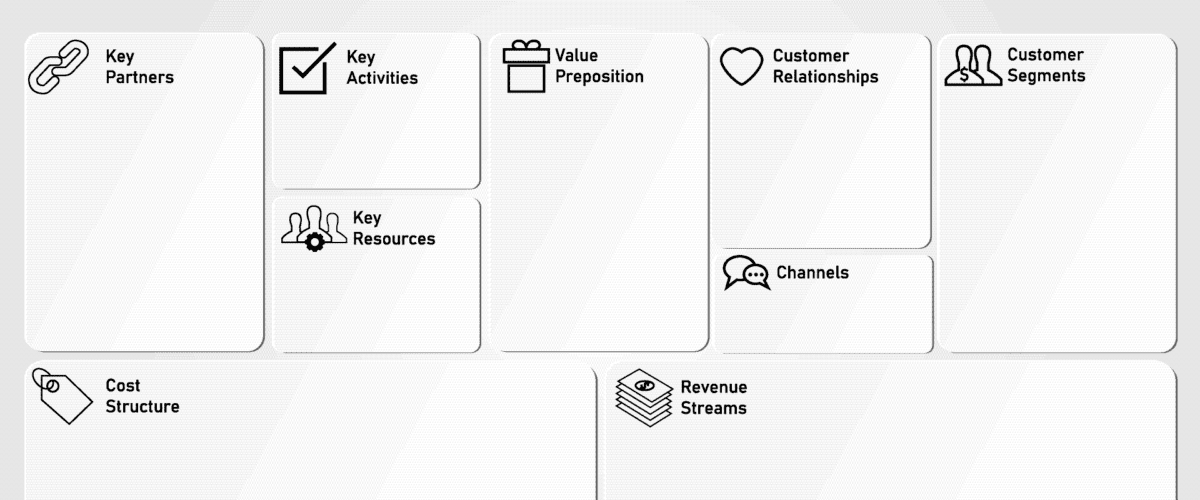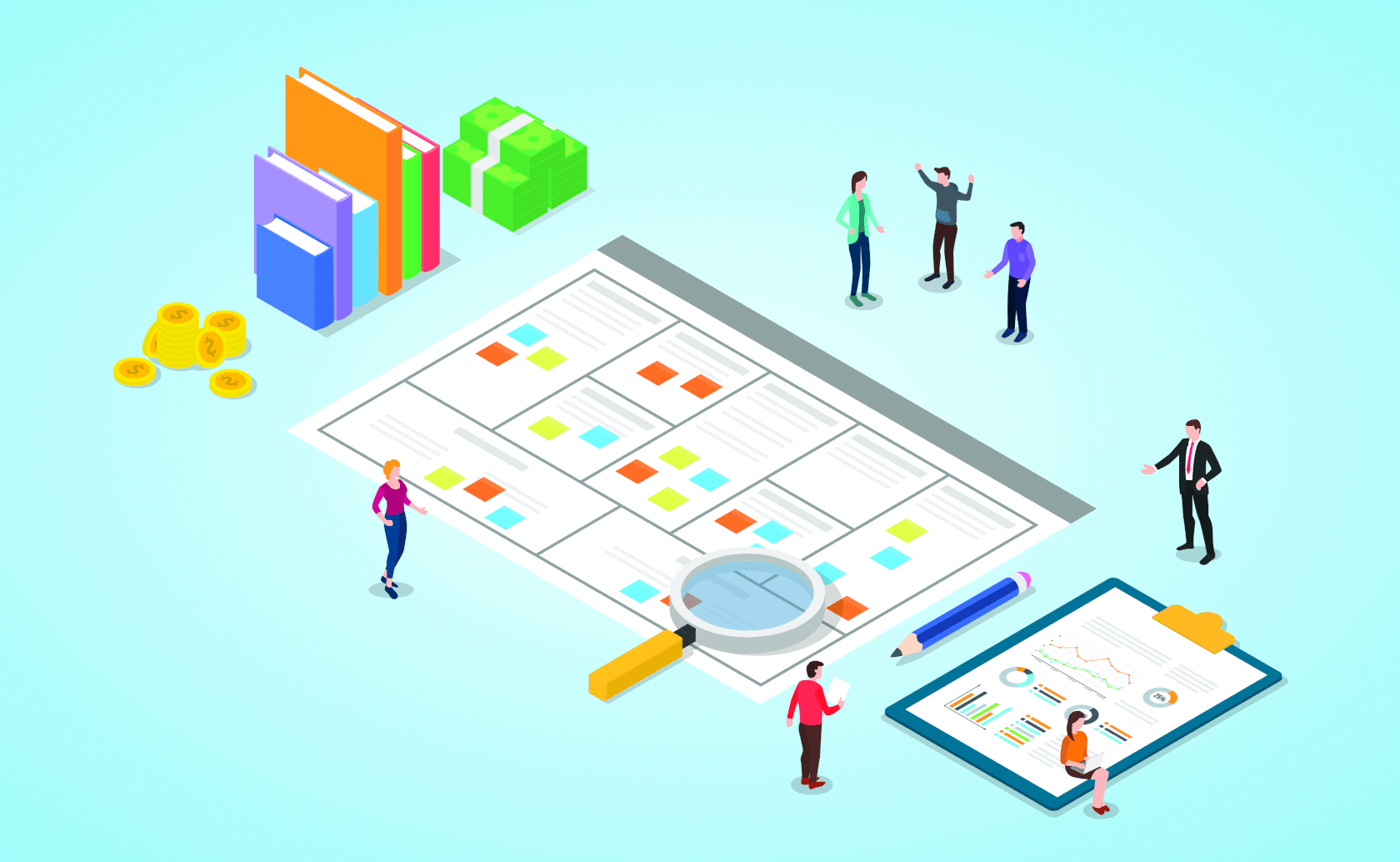Every young person has an idea, and no idea is a waste. It needs a framework to develop your business idea and reflect on your business model, market nature, target group, partners, revenue stream, and other key segments of your business.
The Business Model Canvas (BMC) is a well-known and strategic management tool in equipping business ideas under a clear pathway to become a reality and a clear definition of a business idea. It is used more broadly in hackathons, projects, campaigns, and events worldwide through various institutions and individuals (entrepreneurs). It is in template format and as a one-pager document with a clear objective to help you comprehensively structure your business idea.
The BMC was initially developed by Alexander Osterwalder in 2004 in his Ph.D. dissertation on business model innovation. The current version of BMC was developed and introduced by Osterwalder and Pigneur with 470 practitioners from 45 countries.

The BMC Template
An organization’s business model can be described with nine basic building blocks, your customer segments, your value proposition for each segment, the channels to reach customers, customer relationships, the revenue streams you generate, the key resources and key activities that you are required to create value, the key partners and the cost structure of the business model, but it’s not sufficient to just name the nine building blocks where you really want to do is to map them out on a pre-structured canvas.
On the right side of the BMC template, you are dealing with external factors that are not under your control, such as customer or market, while on the left side, it is more internal affairs of your business and is under your control. In the middle, through value proposition, you connect external factors with internal. This is what we call the BMC, the tool that helps you map, discuss, design, and invent new business models.

Let’s briefly go through the nine building blocks:
The customer segments: These are all the people or organizations you are creating value for. This includes simple users and paying customers for each segment.
The value proposition: These are the bundles of products and services that create value for your customers.
The channels: These are described through which touchpoints interact with customers and deliver value.
The customer relationships: Outlines the type of relationship you are establishing with your customers.
The revenue streams: Makes clear how and through which pricing mechanisms your business model is capturing value.
The key resources: Show which assets are indispensable in a business model.
The key Activities: Show which things you really need to perform well.
The key partners: Show who can help you leverage your business model.
The cost structure: Once you understand your business model’s infrastructure, you have insights into your cost structure.

Benefits of the BMC
So with the business model canvas, you can knock out your entire business model in one image, and benefit from it by; 1) getting a quick overview of your business model and being more realistic, 2) this visualized format makes it easy to pitch for investors and convey the concept comprehensive, 3) you can bring changes to it anytime and share it with stakeholders, 4) it is used by large corporations and startups, 5) it is structuring your business model in a more connected system, and 6) you can use BMC with your employees for a brainstorming session to have better business models.

Sustainability and The BMC
Here is a real-time example of a sustainable business model from Tesla, a pioneer car manufacturing company based in the United States.
Tesla’s customers are defined as friends of the environment and wealthy with a conscious mindset. Besides, it welcomes other Original Equipment Manufacturers (OEMs). Tesla’s relationship with a customer is based on its Lovemark brand. Tesla reaches customers through direct sales, charging stations, and referral programs. The reason people purchase its products is defined in the value proposition section as high-performance electric vehicles, connected vehicles, free supercharging stations, and superior electric vehicles in the market.
To manufacture the electric vehicle, Tesla takes activities such as car design, software development, brand development, scaling up production, and car manufacturing. Tesla’s essential resources which enable its activities are the high-end brand, manufacturing facilities, knowledge, super-charging infrastructure. For Tesla, its partners are technology suppliers and other OEMs. For this giant company, its costs consist of marketing, super-charging station network, car design, car development, and car manufacturing. The revenue stream comes from car sales, charging, and sales of other parts of the vehicle in relation to car maintenance or battery life and service subscription.
Illustration: fatmawati achmad zaenuri/shutterstock
You might also like:
Support us!
All your donations will be used to pay the magazine’s journalists and to support the ongoing costs of maintaining the site.
Share this post
Interested in co-operating with us?
We are open to co-operation from writers and businesses alike. You can reach us on our email at [email protected]/[email protected] and we will get back to you as quick as we can.










